
8 Animal Sanctuaries to Visit in the West
These ethically run homes for adorable creatures allow visitors to get up close and personal.
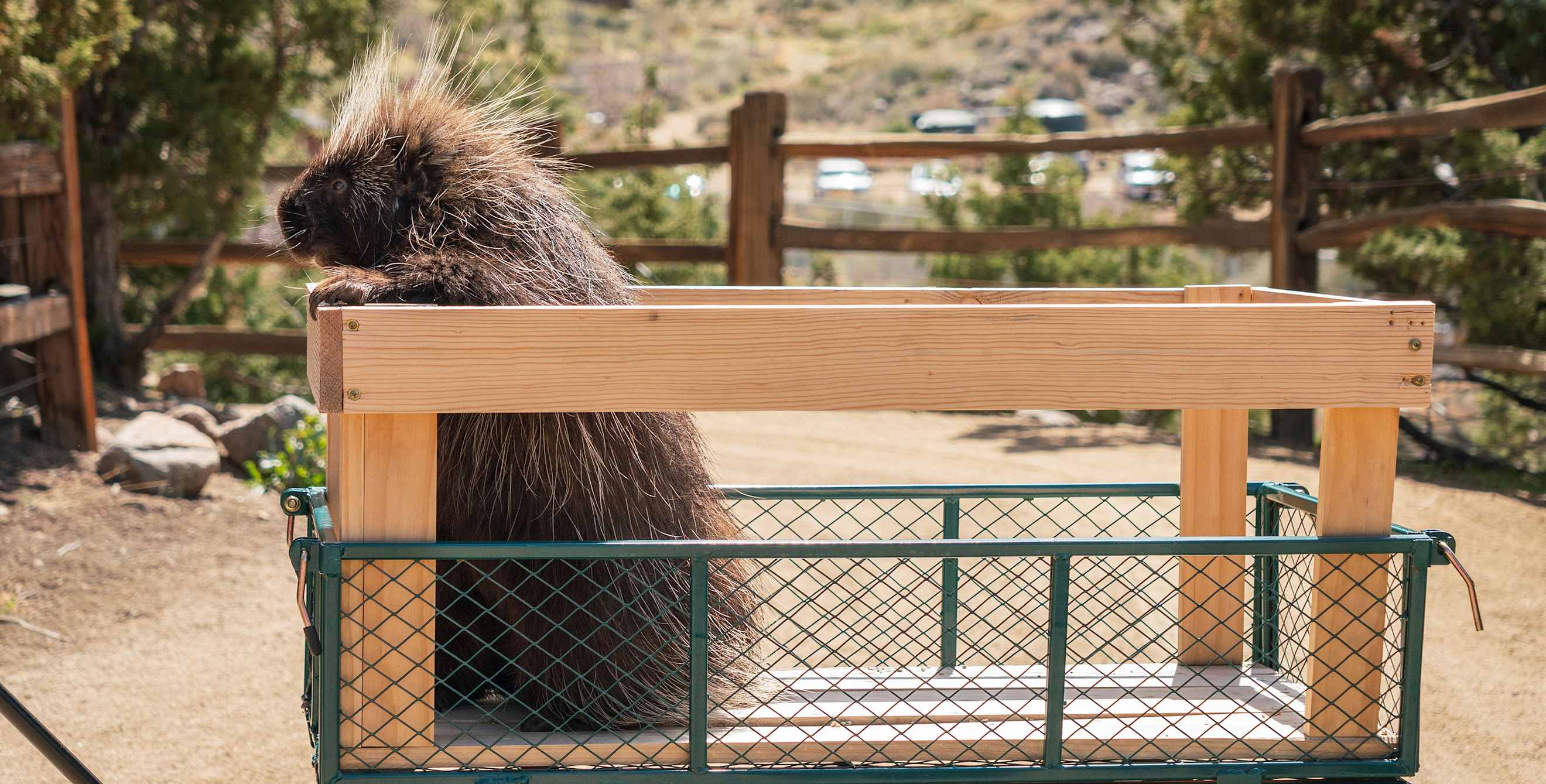
Something awakens inside people when we encounter animals up close: the electric thrill of gazing into the wild eyes of a wolf or raptor, the surge of affection when we hug an alpaca or a cow, the playful spirit we feel on seeing a goat or reindeer romp. These connections resonate with an untamed, natural, wiser part of ourselves.
But there’s a caveat. Some tourism experiences force animals into uncomfortable, stressful, and even abusive situations. And it can be difficult for conscientious travelers to determine what goes on behind the scenes at some businesses, or what standards govern their practices.
So we’ve sought out eight opportunities to ethically meet animals up close. “Ethical” means the animals’ welfare comes first—over customers’ desires and the organization’s financial and promotional concerns. The animals live in humane conditions and are treated with love and care. Any interactions between humans and the animals are guided by sensitivity, empathy, and the principle that it’s a delight and honor to be in the presence of these furry, feathered, spiny, or scaly beings.
Paint with a porcupine and see cheetahs in Nevada.
Quillber the porcupine is “a bit of a Picasso,” says Leesa Greenawalt, an animal keeper at Animal Ark near Reno. You can watch the adorable rodent grab a paintbrush and create an abstract, surrealist work of art that you can take home. Alternatively, you can help set up Quillber’s yard, put out his food, and learn how his keepers care for him. These encounters are part of Animal Ark’s new Meet and Greets—private, mostly non-touch sessions when you can learn about the sanctuary’s residents up close. Other options include marveling at cheetahs training to sprint, petting an iguana or desert tortoise, and seeing Katniss the kestrel (a type of falcon) take a flying lesson with her keeper.
Animals come to this Zoological Association of America–accredited facility if they can’t be released into the wild. Some have been injured. Others, like Katniss, were taken by people from their natural homes before they could learn survival skills and were then abandoned or surrendered to the sanctuary. Animal Ark selects only well-socialized animals to engage in Meet and Greets, and they never force them to participate. “It’s always the animal’s choice,” Greenawalt emphasizes. “We want our animals to be as comfortable and happy as possible, because this is their forever home.”
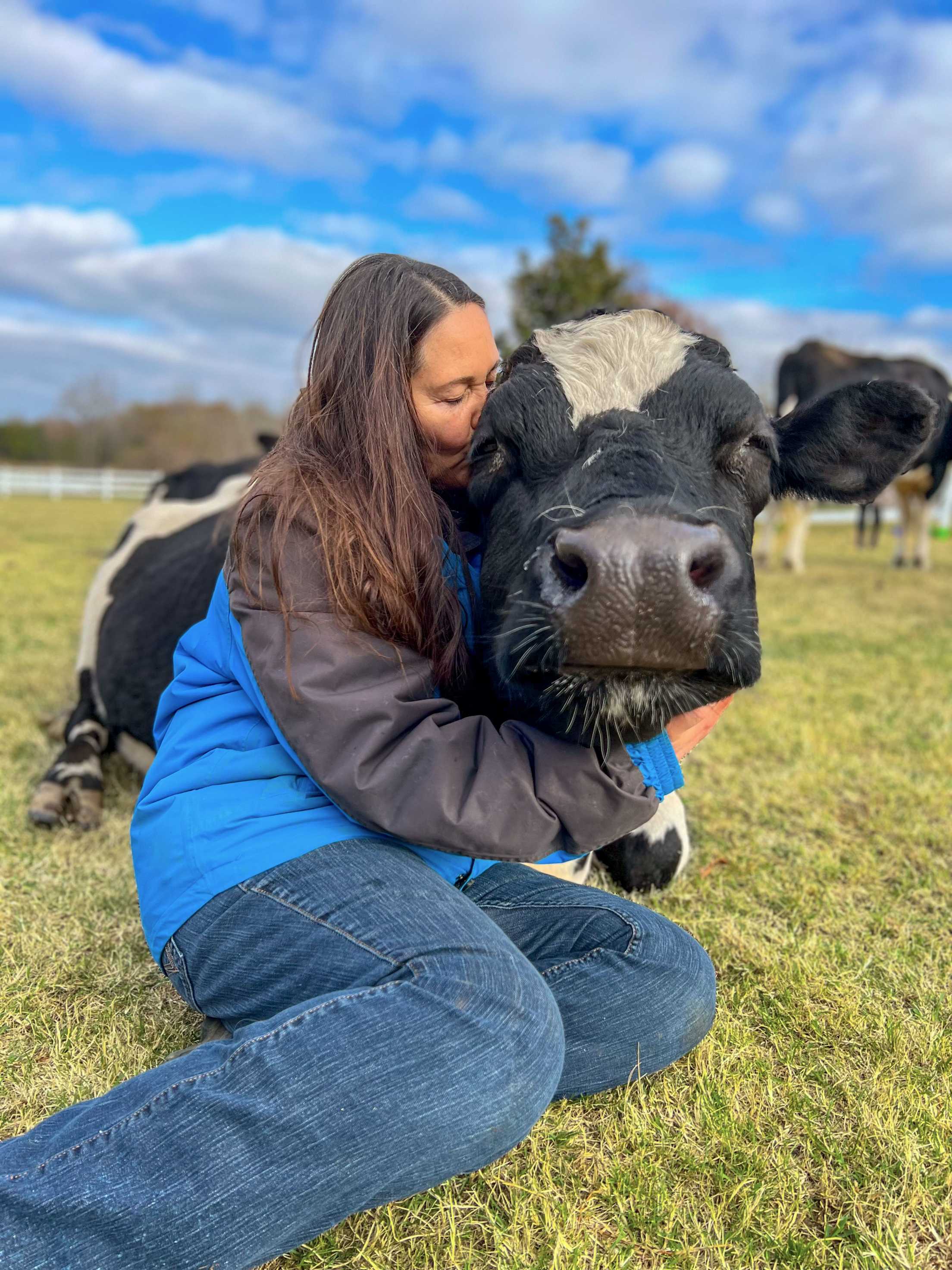
Cuddle cows and turkeys in California.
When Ellie Laks visited a California petting zoo in 1999, she became “very aware of how using animals for profit can go extremely wrong,” she says. The ponies were forced to trudge in endless circles with no breaks and no water. Children chased the goats and sheep, who had difficulty walking because their toenails were untrimmed. So Laks took some of the sick and dying animals back to her property, and the Gentle Barn was born.
Now, this Santa Clarita sanctuary hosts therapy sessions for adults and children featuring barnyard animals and even “cow hugs.” In these sessions, animals who have been rescued and rehabilitated from abusive situations can help “heal people with the same stories of trauma,” Laks says. Every Sunday, the Gentle Barn opens for public tours, when visitors can cuddle with cows, pet goats, rub pigs’ bellies, and more. Every animal has a volunteer docent who informs visitors how to interact with them based on the animal’s likes and dislikes.
The sanctuary also hosts Gentle Thanksgiving, when visitors can hug turkeys and feed the birds their favorite treats, from corn to blueberry pie. “[We can] connect with animals in a way that is not causing suffering, but is causing more awareness,” Laks says, “so we can all take better care of Mother Earth and her animals.”
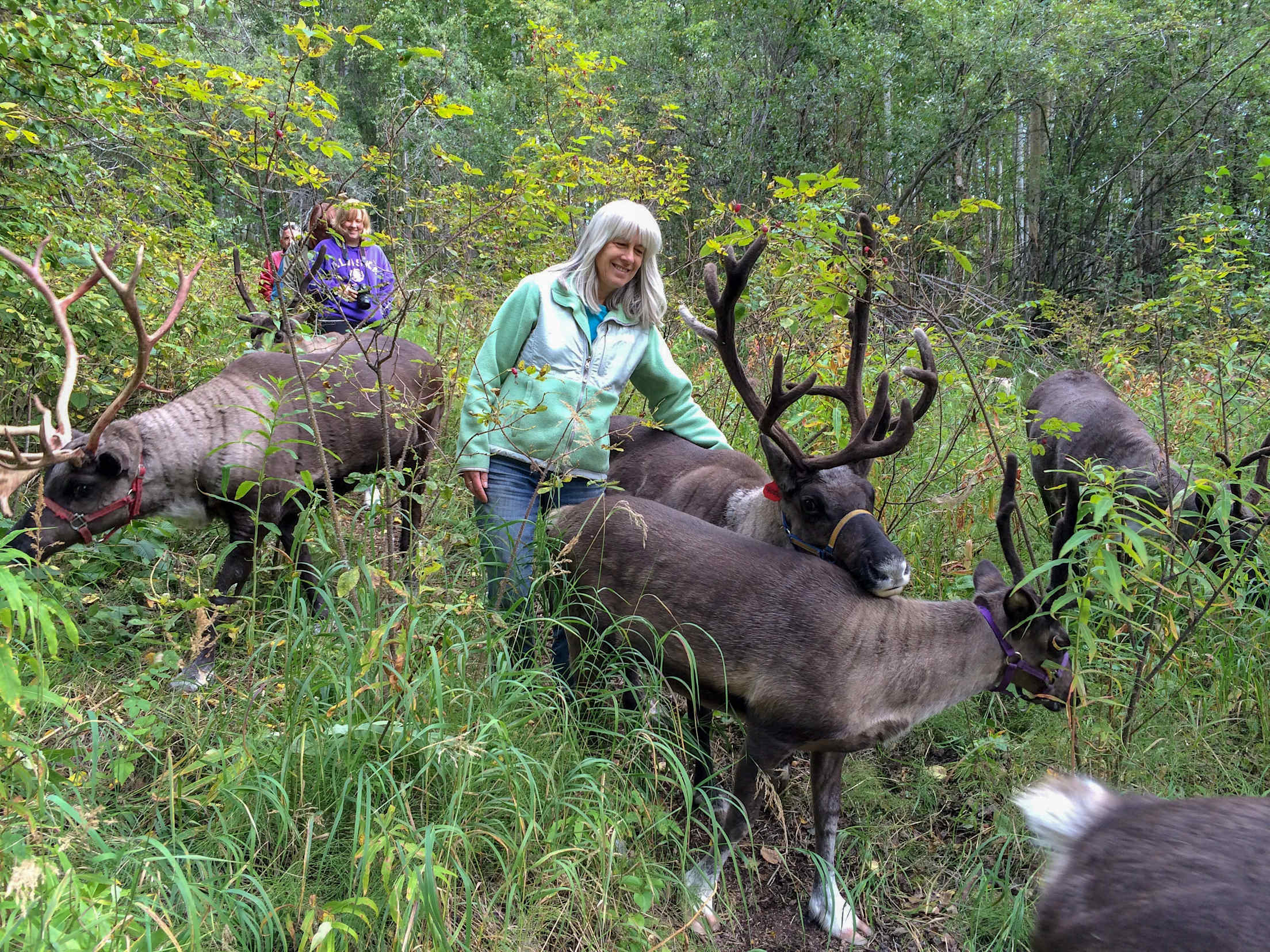
Walk and do yoga with reindeer in Alaska.
To adapt to the Arctic, reindeer have evolved superpowers. Their eyes change from gold to blue in winter to let in more light. Their ultraviolet vision makes spotting lichen in semidarkness a snap. And their foot ligaments click to help the herd stay together during whiteouts and fog. You too can learn to harmonize with the Alaskan environment on a walk with these remarkable ruminants at Running Reindeer Ranch in Fairbanks.
As the reindeer frolic and forage, life-long Alaskan Jane Atkinson regales participants with the history of human-reindeer relationships, the biology of reindeer and caribou, and the ecology of this birch boreal forest. “Sometimes the reindeer want to be close to people and lean in for a snuggle,” Atkinson says. “Other times, they’re doing their own thing, and we don’t force them to behave any differently than they feel like.”
The reindeer even act natural during the ranch’s summertime outdoor concerts and yoga sessions. They might graze, curiously sniff people’s belongings, and occasionally nap on the yoga mats. “Reindeer are very sensitive to energy,” Atkinson notes. So they get animated when musicians jam on steel drums or when yogis get into a vinyasa flow. “But by savasana,” Atkinson says, referring to the corpse pose, “they’re all lying down.”
Pet potbellied pigs in Arizona.
Across the country, potbellied pigs have been abandoned, surrendered, or harmed for reasons ranging from cruelty to myths about how large these pigs will grow. As piglets, brothers Bert and Ernie were dumped in a vacant lot. Creampuff was picked up by the police after they arrested her owner for animal abuse. Maggie and Tomahawk were strays who’d been attacked by dogs. Now they’ve found a safe haven at Ironwood Pig Sanctuary, which has rescued around 1,700 pigs since its founding in 2000. Most will spend the rest of their lives at this refuge in the town of Marana, communing with their porcine companions in open fields, spacious shaded enclosures, and cooling mud wallows.
Every Saturday from October to April, visitors can take a tour (advance registration is required) to meet some of the 680 or so pigs, pet them, and rub their potbellies. Cofounder Mary Schanz considers the pigs her family and ensures their comfort comes first. “We make sure people are not trying to pet or engage a pig that does not welcome their advances,” she says. But pigs are gregarious herd animals, “so many enjoy the attention,” Schanz adds. The facility—which is accredited by the American Sanctuary Association and has a top rating (four stars) from Charity Navigator—also hosts occasional events such as Painting with Pigs, when you can paint porcine portraits and pet pigs as they scuttle past.
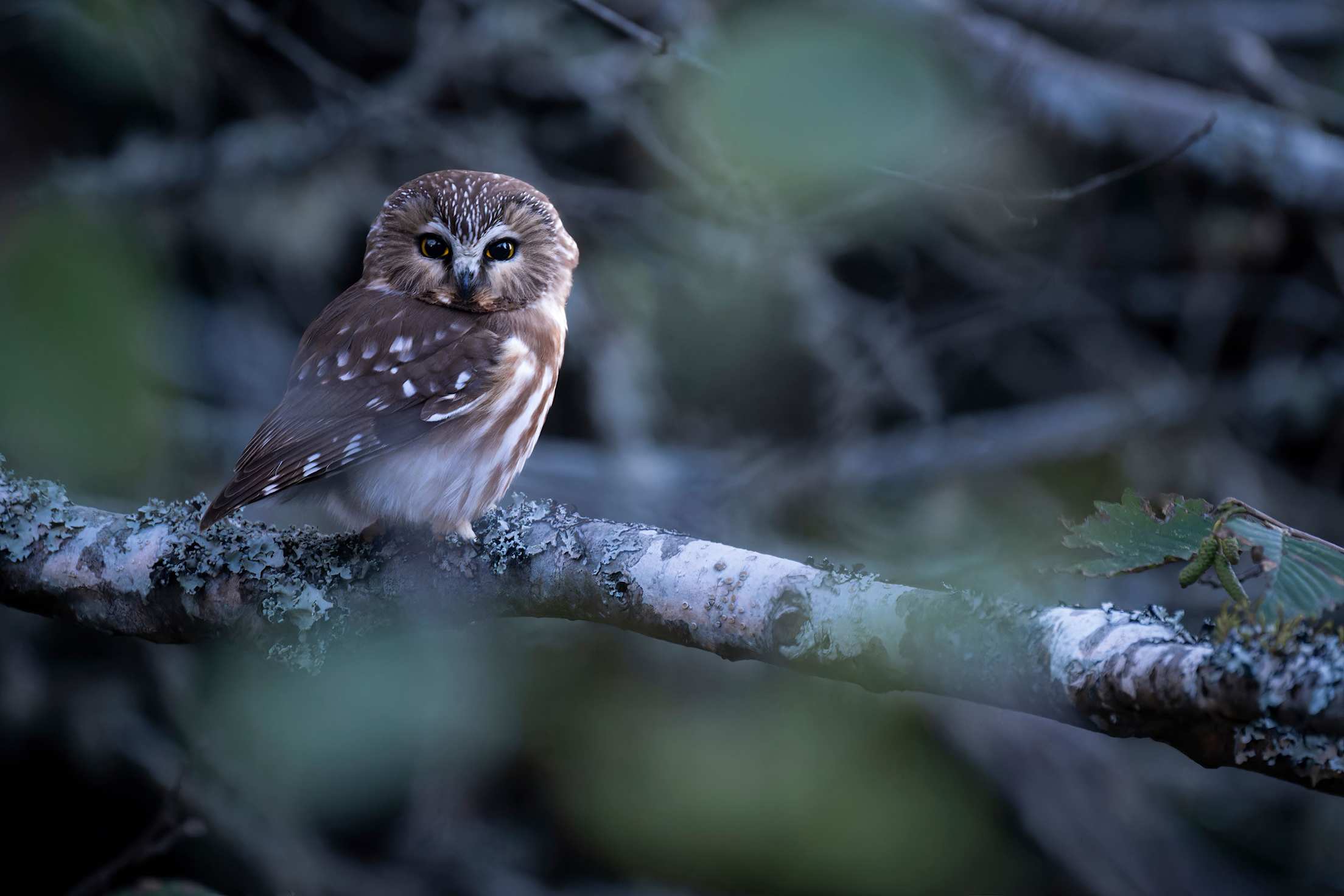
Help protect raptors in Utah.
In northern Utah, tiny forest owls emerge each night from their nests in aspen tree cavities to silently swoop through the darkness in search of mice, moths, and more. Sadly, scientists predict that aspens will nearly disappear from some parts of the West by 2090. This habitat loss threatens the owl species—flammulated, Northern saw-whet, and others—that call aspens home.
Conservationists aren’t sure how best to protect these hand-size, yellow-eyed fluffballs. So HawkWatch International and Earthwatch have created an eight-day citizen science expedition near Snowbasin. This opportunity allows members of the public to directly support scientific research, both with their time and a charitable donation make to the project via their expedition fee. Working alongside biologists, participants will record the locations of aspen tree cavities, document the presence of different owl species based on their toot and boop sounds, and help researchers catch, weigh, and band owls.
HawkWatch International, a research and conservation organization based in Salt Lake City, also offers brief encounters with birds of prey. During Birds in the Lab events at the Natural History Museum of Utah or Reading with Raptors sessions at the Discovery Gateway Children’s Museum, you might stare into the heart-shaped face of a barn owl or enjoy story time alongside a Swainson’s hawk while learning about protecting these magnificent creatures.
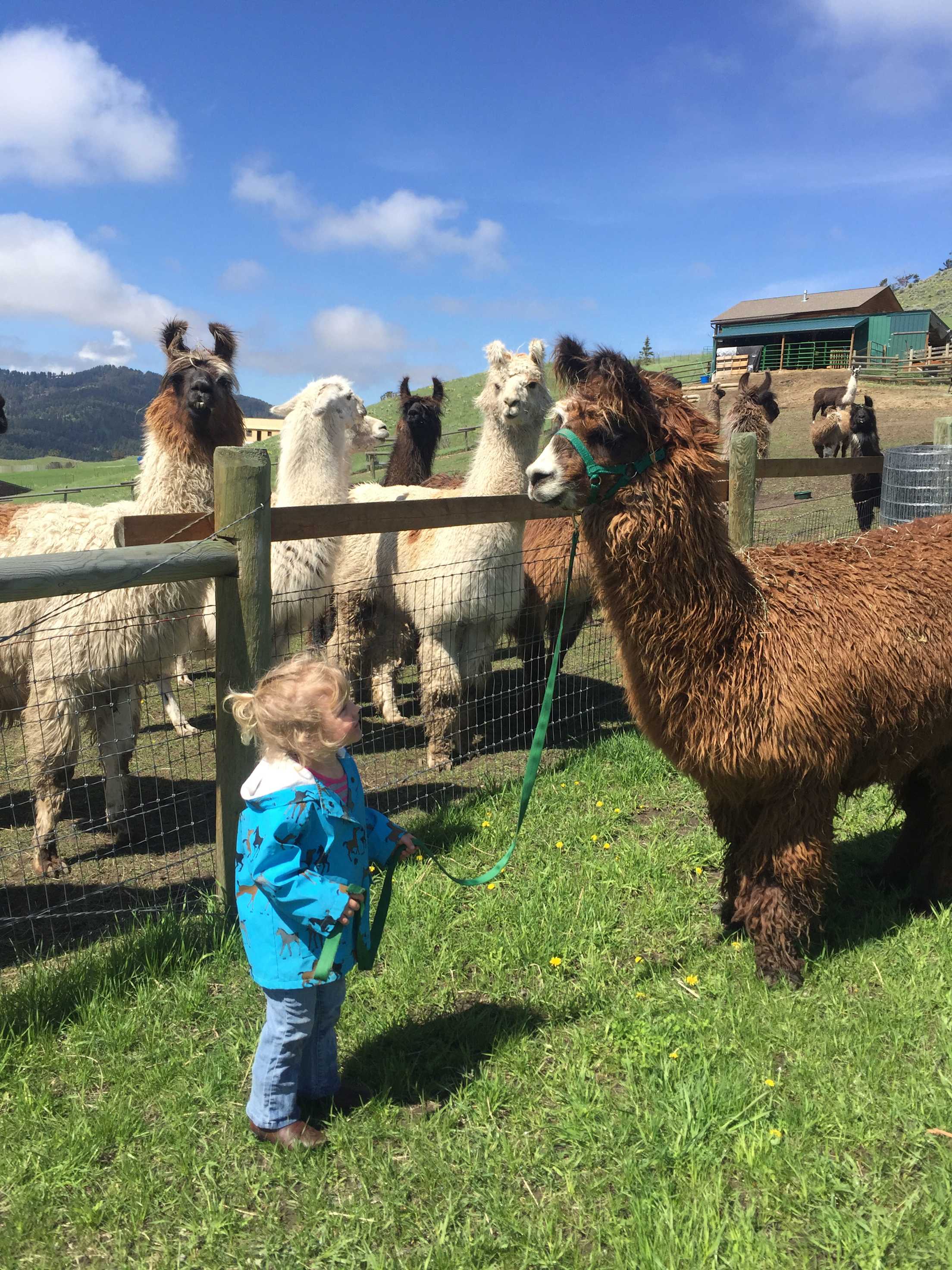
Hike with llamas in Montana.
Much like potbellied pigs, llamas were once a trendy animal to own, and breeders sold them for huge sums in the 1980s through the early 2000s. After the market burst around 2008, hundreds of these gentle camelids were abandoned, neglected, or surrendered to sanctuaries. Susi Hülsmeyer-Sinay, founder of Yellowstone Llamas, has participated in multiple llama rescues, including capturing abandoned llamas near her Montana property and helping save around 500 llamas from a so-called sanctuary where animals were neglected.
Travelers can befriend Hülsmeyer-Sinay’s llamas on a five-hour trek—with a stop for a picnic—through the forests and meadows of northern Yellowstone National Park. Alternatively, you can take a 2.5-hour hike with the herd at Sage Lodge in Paradise Valley, north of the park, or visit these woolly-haired charmers at their home on the farm. “The llama trips are enjoyable because you really develop a relationship with your animal,” Hülsmeyer-Sinay says. “Llamas are very in tune with humans and their surroundings, and they often see wildlife before we do. That puts you more in the moment, and it’s very peaceful and healing.”

Run with wolves (sort of) in California.
Koda, a brown wolf dog, grew up at an Alaskan roadside attraction where he was chained to a pole, unable to take shelter or escape the loud cars and tourists who paid to take selfies with him. Pack mates Annie, Bella, and Charlie were rescued from a fur farm in Illinois that was shut down for animal cruelty. Now these wolf-dog mixes run free at Wolf Connection, a sanctuary sprawled across 165 acres of the Angeles National Forest north of Los Angeles.
Though many people are captivated by the idea of owning a dog that is partly or mostly wolf, these canines typically do not make good pets. They’re escape artists, they can be skittish around people, and they get destructive when left alone at home. As a result, the majority of wolf dogs are euthanized or surrendered to sanctuaries. But when cared for by experts and bonded to a pack, they can be wonderful healers.
Wolf Connection provides animal therapy to youth, veterans, women, and others who, like these rescue animals, have a history of trauma and abuse. Through the wisdom of wolves, participants learn to trust their intuition, embrace their wildness, collaborate with a “pack” of people, and connect with nature. Once a month or so, the public can meet the 40-plus wolf dogs at a Run with the Pack event. You’ll meet the pack, go for a short walk with wolf dogs, hear their backstories, and maybe get wolf-dog kisses.
Say “Baa-maste” with goats in Arizona.
It’s hard to say who’s having a better time during Arizona Goat Yoga’s events: the goats or the people. Goats sporting colorful headdresses or shimmery unicorn horns gambol amid giggling participants as they do downward dog, or clamber on people’s backs during cow pose. Located on a farm in Gilbert, the events usually have themes—1980s, ugly Christmas sweater, Dolly Parton—and sometimes also feature cow cuddling and alpaca nuzzling.
Cavorting to country music is clearly not natural goat behavior. But according to Alan McElligott, an associate professor of animal behavior and welfare who specializes in goats, many goats do enjoy goat yoga. That’s partly because goats love climbing. Also, goats were domesticated earlier than any animal except dogs, closely interacting with humans for around 11,000 years. Scientists have found that goats can correctly interpret humans’ vocal tones, and they’re drawn to smiling people—which is basically everyone doing goat yoga.
Co-owners April Gould and Sarah Williams consider their goats “beloved pets” and socialize them to be comfortable around humans from a young age. “Our goats enjoy the affection they get from everyone,” says Gould, who’s been raising goats for 20 years. “The fact that my goats actually come up to you and want to be petted says a lot.”